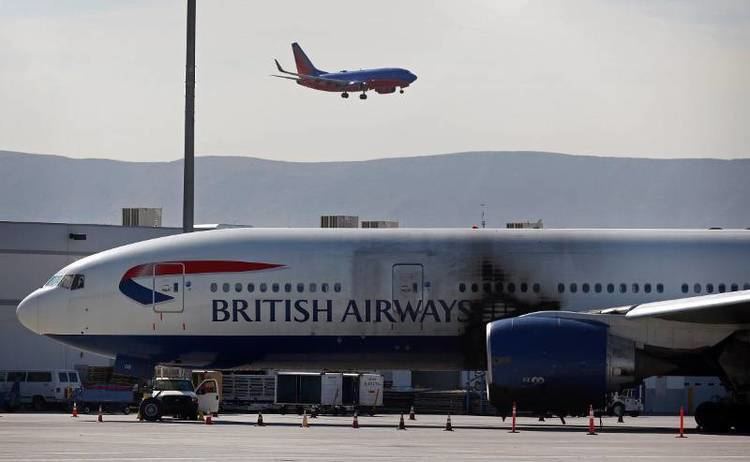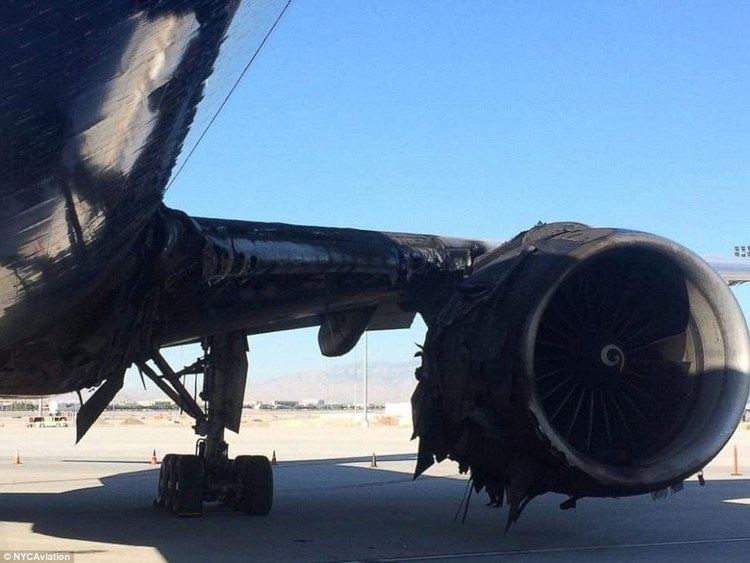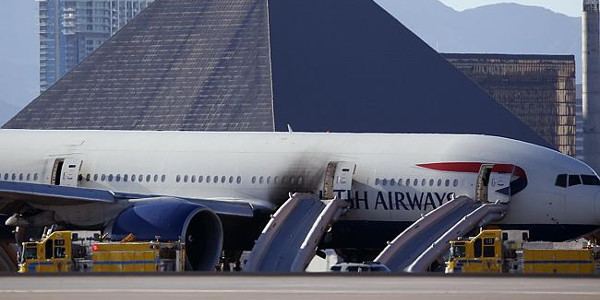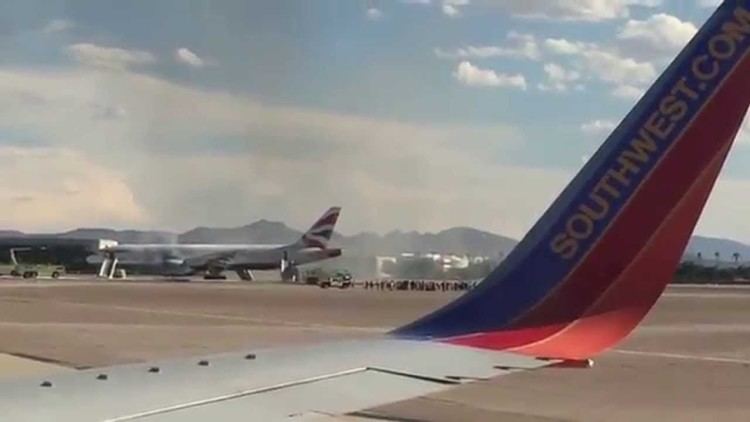Passengers 157 Fatalities 0 Date 8 September 2015 Injuries (nonfatal) 14 Passenger count 157 | Crew 13 Survivors 170 (all) Number of deaths 0 | |
 | ||
Summary Aircraft fire following uncontained engine failure Location McCarran International Airport, Nevada, United States Similar Ceiba Intercontinental Airlines Fl, Aviastar Flight 7503, Dynamic Airways Flight 405, 2016 Sunbird Aviation c, 2015 Juba An‑12 crash | ||
British airways flight 2276 atc recording aircraft fire following un contained engine failure
British Airways Flight 2276 was a scheduled international passenger flight which caught fire during take-off from Las Vegas-McCarran International Airport on 8 September 2015, prompting an aborted take-off and the evacuation of all passengers and crew. The flight, bound for Gatwick Airport near London, had 157 passengers and 13 crew. The aircraft had suffered an uncontained engine failure in the left (#1) GE90 engine.
Contents
- British airways flight 2276 atc recording aircraft fire following un contained engine failure
- Incident
- Aircraft
- Investigation
- References

Repairs on the aircraft were completed in February 2016 before it returned to passenger service on 24 March.
Incident

The aircraft left Terminal 3, Gate E3, at 15:53 local time, and began its take-off from Runway 07L at 16:12 where the incident occurred.

After noticing what the pilot later described as a "catastrophic failure of the engine" well before take-off speed, the flight crew aborted the take-off by using the aircraft's brakes and ordered an evacuation of the aircraft. All passengers and crew escaped, with some suffering minor injuries from the evacuation. The aircraft is thought to have reached a speed of approximately 90 miles per hour (140 km/h) when the decision to abort was made; far below the takeoff speed of the aircraft, which is approximately 180 miles per hour (290 km/h).

The airport's emergency services extinguished the fire within five minutes of the mayday call. Fourteen people were lightly injured, mostly from sliding down the escape chutes, and treated at Sunrise Hospital & Medical Center. The fire caused a large hole in the cargo hold and damage to the engine.

The Federal Aviation Administration (FAA) indicated the fire was caused by failure of the left General Electric GE90 engine, one of two fitted on the aircraft. The aircraft came to a halt upwind, causing the fire to be blown towards the fuselage; the aircraft sustained localised, but major, structural damage as a result. The aircraft was equipped with suppression systems, though the systems did not extinguish the fire.
The runway, one of four, was closed for four hours, and several inbound flights were cancelled.
Aircraft

The aircraft involved in the incident was a Boeing 777-236ER, registered as G-VIIO. At the time of the incident the aircraft was almost 17 years old. It was delivered new to British Airways on 26 January 1999.
In December 2015 British Airways announced that a team of engineers from Boeing had assessed the aircraft and determined the damage was limited and suitable for repair. As a result, it was announced that the aircraft would be repaired and returned to service. A team from Boeing completed the repairs in February 2016.
Airworthiness tests were conducted on the aircraft on 25 February 2016. G-VIIO was flown to Victorville the following day, where it was repainted. The aircraft was then flown to Cardiff on 15 March for a routine C check. Finally, it returned to its London Gatwick base and resumed passenger service on 24 March.
Investigation
The National Transportation Safety Board (NTSB), the American air accident investigative body, dispatched four investigators to the site the day after the incident. As well as FAA, Boeing and General Electric involvement, the British Air Accidents Investigation Branch has a representative and that representative has appointed "British Airways and the UK Civil Aviation Authority as technical advisors". Initial NTSB findings were that an uncontained engine failure had occurred and that the "left engine and pylon, left fuselage structure and inboard left wing airplane were substantially damaged by the fire". On 6 October 2015 the NTSB issued an update stating that the accident was traced to the failure of the "stage 8–10 spool in the high-pressure compressor section...liberating fragments that breached the engine case and cowling".
